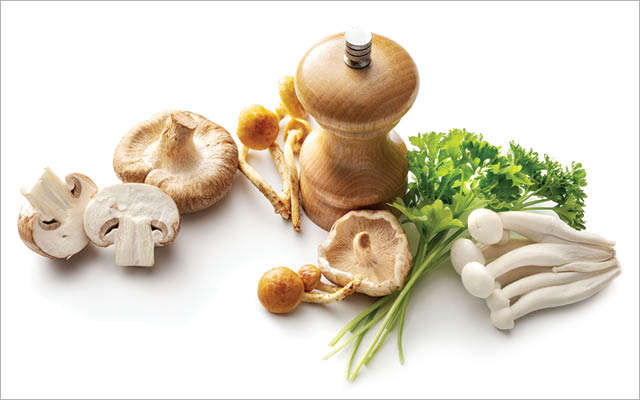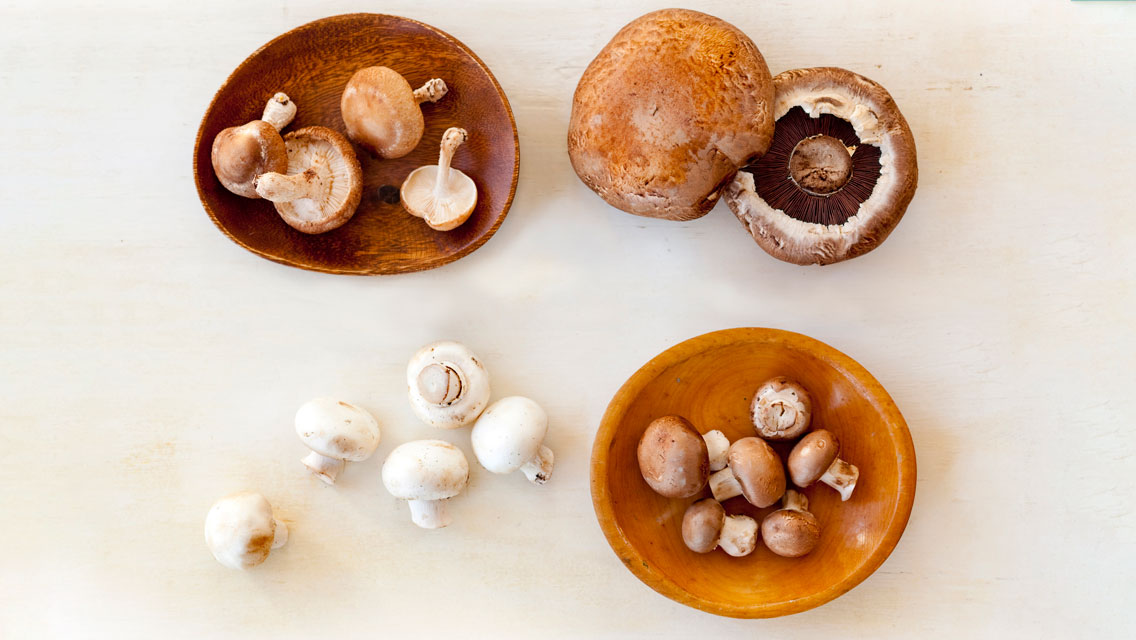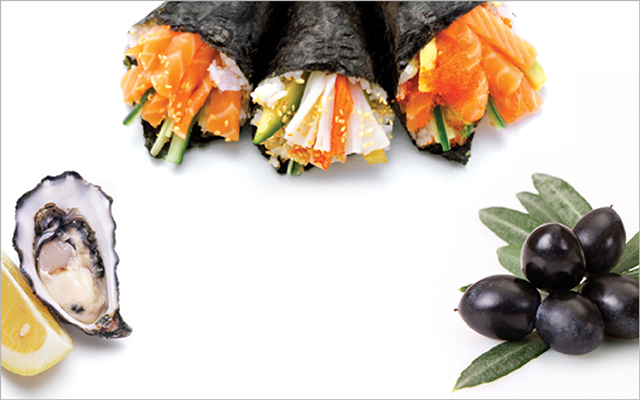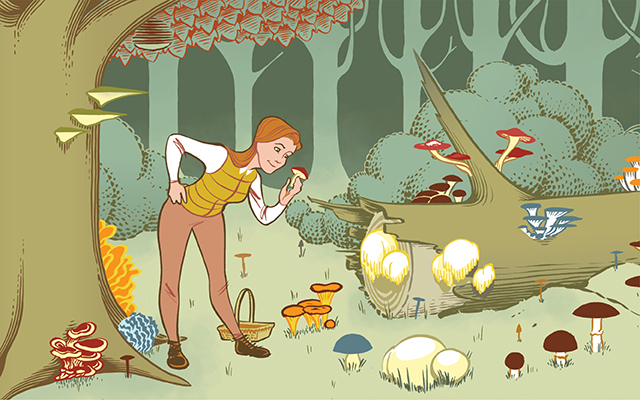For 5,000 years, humans have been drawn to mushrooms as both food and medicine. They are especially revered in the healing traditions of China, Korea, and Japan, yet feared for their poisonous potential in parts of the West.
More recently, the rest of the world has begun to wake up to their potency. “Mushrooms are a treasure of the forest,” says William Li, MD, president and medical director of the Angiogenesis Foundation and author of Eat to Beat Disease: The New Science of How Your Body Can Heal Itself. “It’s hard to find a culinary culture that doesn’t feature mushrooms in some of its traditional dishes.”
One reason is their unique flavor, sometimes described as umami, which is considered the fifth basic taste, along with sweet, salty, bitter, and sour.
“The Japanese nailed the name and Americans adopted it because we didn’t have a word for that savory, protein-rich flavor,” says Eugenia Bone, author of Mycophilia: Revelations from the Weird World of Mushrooms.
Like other umami foods — including red meat, fermented fare, and aged cheese — mushrooms contain all of the essential amino acids, including glutamate, an amino acid most often credited with umami’s delectability.
Umami’s presence signals another key fact about mushrooms — they’re no ordinary vegetable. Sold in the produce aisle, mushrooms are often misidentified as plants. But they are neither plant nor animal: Mushrooms belong to the fungal kingdom.
Specifically, mushrooms are the fruiting bodies of underground fungal networks. “The fungus is like an underground apple tree, and the mushroom is like the apple,” explains Bone.
Out of an estimated 2.2 million to 3.8 million species of fungi, more than 20,000 are known to make mushrooms. Of those, about 30 are commonly eaten in the United States.
Umami may attract our palates to mushrooms, but their nutritional value remains vastly underappreciated, especially in the United States. Many people are either scared off by their unique taste and texture or unnerved by the specter of their more deadly family members.
Still, if you’re among the mushroom-hesitant, it’s worth trying to overcome your aversion. These fungi contain an abundance of nutrients that can help your body fend off illness and maintain good health.
The Healing Power of Mushrooms
The nutrients in mushrooms support a wide array of systems in the body, including the gut, brain, and immune system — often all at the same time.
“When we eat a mushroom, we are not only feeding ourselves, we are feeding our gut bacteria and making that ecosystem happier and more fit,” says Li. This is because mushrooms provide important prebiotics, a type of fiber that sustains healthy gut bacteria.
Among the many prebiotics in mushrooms is beta-glucan, a soluble fiber found in their cell walls. Beta-glucan has been shown to reduce hypertension, stabilize blood sugar, and increase the body’s ability to ward off infection.
Animal studies suggest that beta-glucan lowers inflammation in the gastrointestinal tract and staves off ulcers.
Some of the highest levels of beta-glucan are found in the wild-harvested golden chanterelle, followed by shiitakes. And don’t throw away the stems. “The stem has twice as much beta-glucan as the cap,” says Li.
Many researchers have studied mushrooms’ ability to modulate the immune system and curb tumor growth; this attribute appears to be due, in part, to beta-glucan’s salutary effect on the microbiome.
In one small but notable study at Australia’s University of Western Sydney, 20 volunteers ate either their normal diet or their normal diet plus roughly 11/3 cups of cooked white button mushrooms per day for one week. The goal was to learn if eating mushrooms would activate the immune system in a beneficial way, says Li.
To measure the impact on immune function, the scientists measured levels of immune antibodies, including antibody IgA, in the participants’ saliva. (IgA antibodies are part of the body’s first line of defense against infection.) Those who ate mushrooms saw their IgA soar by 50 percent after a week. After they stopped eating mushrooms, the IgA stayed elevated for another week.
“That was an eye-opening human experiment using a dose of mushrooms that is easy to achieve,” says Li. “It also showed that heat didn’t destroy the beneficial properties, so lightly cooking the mushrooms was OK.”
Finally, the high antioxidant quotient in mushrooms may help slow the inflammation and oxidation that can contribute to cognitive decline. In a 2019 study published in the Journal of Alzheimer’s Disease, scientists at the National University of Singapore analyzed six years of data from more than 600 people. They found that those age 60 and up who ate at least 11/2 cups of mushrooms per week lowered their risk of mild cognitive impairment by about 50 percent.
The mushrooms most commonly eaten by those in the study were golden chanterelle, oyster, shiitake, and white button, but the authors believe that any edible mushroom would offer the same protection.
What’s In a Mushroom
Though they may seem like bit players in the nutrition world, mushrooms are an excellent source of many critical nutrients, including the following.
Vitamin D
A 2014 BMJ study found that almost 70 percent of the U.S. population has an insufficient level of vitamin D. A raft of studies connect a D deficit to several types of cancer as well as type 1 and type 2 diabetes and a host of autoimmune diseases. New research also suggests that vitamin-D deficiency may increase the risk of contracting COVID-19.
We get D from the sun and from food, but mushrooms are our only nonfortified edible source. A cup of maitake mushrooms (a.k.a. hen of the woods) has 99 percent of the recommended daily allowance of vitamin D.
Not all varieties have that robust amount; it depends on their exposure to sunlight. Like humans, mushrooms require sunlight to make vitamin D, so wild-growing mushrooms, such as chanterelles and morels, contain more than commercially grown varieties, like the white button, which are often grown in the dark.
Today, many commercial mushroom growers boost their harvests’ vitamin-D levels by exposing the mushrooms to sunlight or UV rays after picking. After being exposed to UV light, five white button mushrooms, four cremini, or one portobello each provide more than a person’s daily dose of D. (Look for “UV-treated,” “UV-B,” or “rich in vitamin D” on the label.)
You can boost vitamin D yourself by placing mushrooms in the sun. Maryland’s Nutrient Data Laboratory reported that exposing portobellos to UV light for 15 to 20 seconds caused their vitamin D2 to increase from 0.2 mcg to 11.2 mcg.
Selenium
Mushrooms contain more selenium than any vegetable or fruit: Nearly 40 percent of the daily recommended allowance of the trace mineral can be found in just four cremini mushrooms.
Selenium is an antioxidant, essential for the production of enzymes and proteins (called selenoproteins) that help make DNA and protect against cell damage and infection. “Our DNA is part of our body’s defense system protecting us from environmental harms,” says Li.
Evidence also suggests selenium may combat the blues. In a 2018 review in the journal Nutrients, researchers linked a diet high in selenium to reduced susceptibility to depression; they believe that it may help defend the nervous system against oxidative stress.
“There is a strong connection between inflammation and depression,” says integrative-medicine physician and herbalist Aviva Romm, MD. “Selenium’s ability to protect cells and DNA from inflammatory damage makes it an important nutrient.”
Ergothioneine and Glutathione
Mushrooms are packed with these powerful antioxidants, which help mitigate inflammation and oxidation, two drivers that accelerate aging and fuel diseases like cancer, heart disease, and dementia.
The body can’t make ergothioneine, so we must get it from food. This used to be easier: In the past, tiny amounts of ergothioneine — found in underground fungal networks — made their way into many foods. Millions of miles of fungal networks crisscrossed healthy soil, and plants grown in it absorbed ergothioneine through their roots. Animals grazing on those plants collected more in their bodies, and hence the nutrient moved up the food chain.
Conventional farming that employs aggressive tillage of the soil appears to be disrupting the fungal networks that pass ergothioneine to plants, thereby reducing its availability. This may significantly affect our long-term health, says Robert Beelman, PhD, professor emeritus of food science and director of the Penn State Center for Plant and Mushroom Products for Health. He notes that studies suggest ergothioneine levels in the American diet have dropped in the last century.
Still, because mushrooms are basically “big balls of fungi,” says Beelman, they are the single best source of ergothioneine.
Glutathione is another high-impact antioxidant. It guards each cell’s energy-producing factories — the mitochondria — from bacteria, viruses, and toxins. (Learn more about this superhero antioxidant that battles toxicity, chronic disease, and premature aging at “Glutathione: The Great Protector“.)
“Without a doubt, mushrooms are the highest dietary source of these two antioxidants taken together,” Beelman explains.
Porcini mushrooms — a component of the widely hailed Mediterranean diet — offer the richest concentration of ergothioneine and glutathione. “In Italy, harvesting porcinis is practically a national pastime,” says Beelman.
Tips for Eating More Mushrooms
Ninety percent of mushrooms eaten in the United States are the familiar white buttons. Though it’s not the most potent variety, it’s still good.
“The common white button is a healthy choice,” says William Li, MD. “They are a good source of beta-glucan, a soluble fiber that stimulates the immune system.”
More adventurous eaters have probably tried creminis and portobellos, which are browner and slightly meatier than white buttons. The portobello, with a cap size of up to 6 inches across, packs the most umami, says Eugenia Bone, author of The Kitchen Ecosystem: Integrating Recipes to Create Delicious Meals, because it is the largest and most mature, meaning it has spores.
Once you’re comfortable eating those mushrooms, consider branching out.
“Different mushrooms — just like different nuts and seeds — supply your body with different nutrient profiles,” explains Angela Lemond, RDN. “White buttons have the most potassium, portobellos are rich in antioxidants, and oyster and shiitake contain [abundant] beta-glucan, a powerful prebiotic.”
Mushrooms pair nicely with other umami-rich foods, including cheese and meats, and fermented foods, like tempeh. “You can grill them, roast them, sauté them, boil them, scallop them, or eat them raw,” says Bone. “The variations are endless.”
These tips can help you make the most of your mushrooms.
Look for uniformly colored mushrooms, because dark spots may mean they are past their prime. Buy them whole rather than precut. Li says that preslicing mushrooms leads to the faster breakdown of their active nutrients.
Store fresh mushrooms for up to a week in a cool, dry place. Li’s first choice is a root cellar because of the low humidity, but a refrigerator is fine. Store them in a brown paper bag and leave the top open for moisture to escape. “People don’t realize how humid their refrigerators are,” he says. “Moisture promotes spoilage.”
Rinse sturdier varieties of mushrooms under running water and pat them dry with a dish towel. This can work for white buttons and other firmer types. More delicate varieties will absorb some water, and because mushrooms are 90 percent water to begin with, adding more can dilute their flavor.
Clean more tender varieties by removing dirt and grit with a damp paper towel or, better yet, a clean, soft-bristled toothbrush or mushroom brush, a tool that removes dirt without adding moisture. “If you are a mushroom aficionado, go for the brush,” says Li. “Otherwise, brushing or rinsing them is perfectly fine.”
Cook mushrooms, Bone recommends, by thinking of them as any other protein and going either “low and slow, or fast and hot.”
Low and slow is best for soups and stews: Though some of the nutrients will leach out of the mushrooms, they will stay in the broth. To go fast and hot, sauté quickly in butter and a splash of wine, toss into a hot wok, or put marinated portobellos on the grill. A burst of heat is all that’s needed to unleash maximum flavor.
Swap mushrooms into recipes if you’re hesitant about eating them. This is known as “the blend”: Replace a portion of ground meat with mushrooms, then prepare as you would otherwise. (Finely chop the mushrooms and cook them down before adding in the ground meat.) This adds the mushrooms’ micronutrients to a dish.
Lemond suggests using the blend for hamburgers, meatloaf, and meatballs. “Play around with the proportion that tastes best to you,” she says. “It’s an easy way to increase the nutrients in your favorite meaty recipes.” (For our mushroom-walnut burger recipe, see “Mushroom Walnut Burgers” .)
This article originally appeared as “Friendly Fungi” in the March 2021 issue of Experience Life.




This Post Has 0 Comments